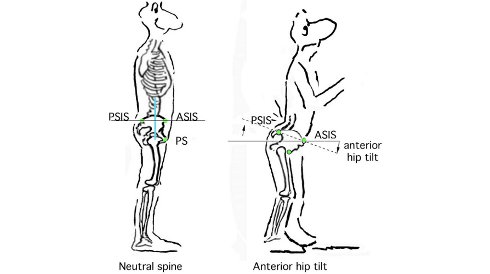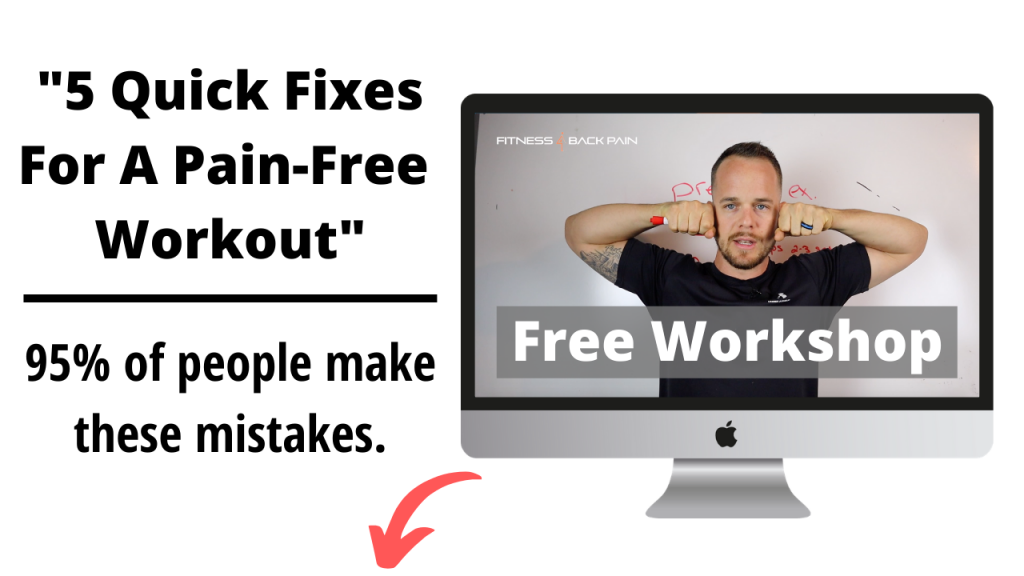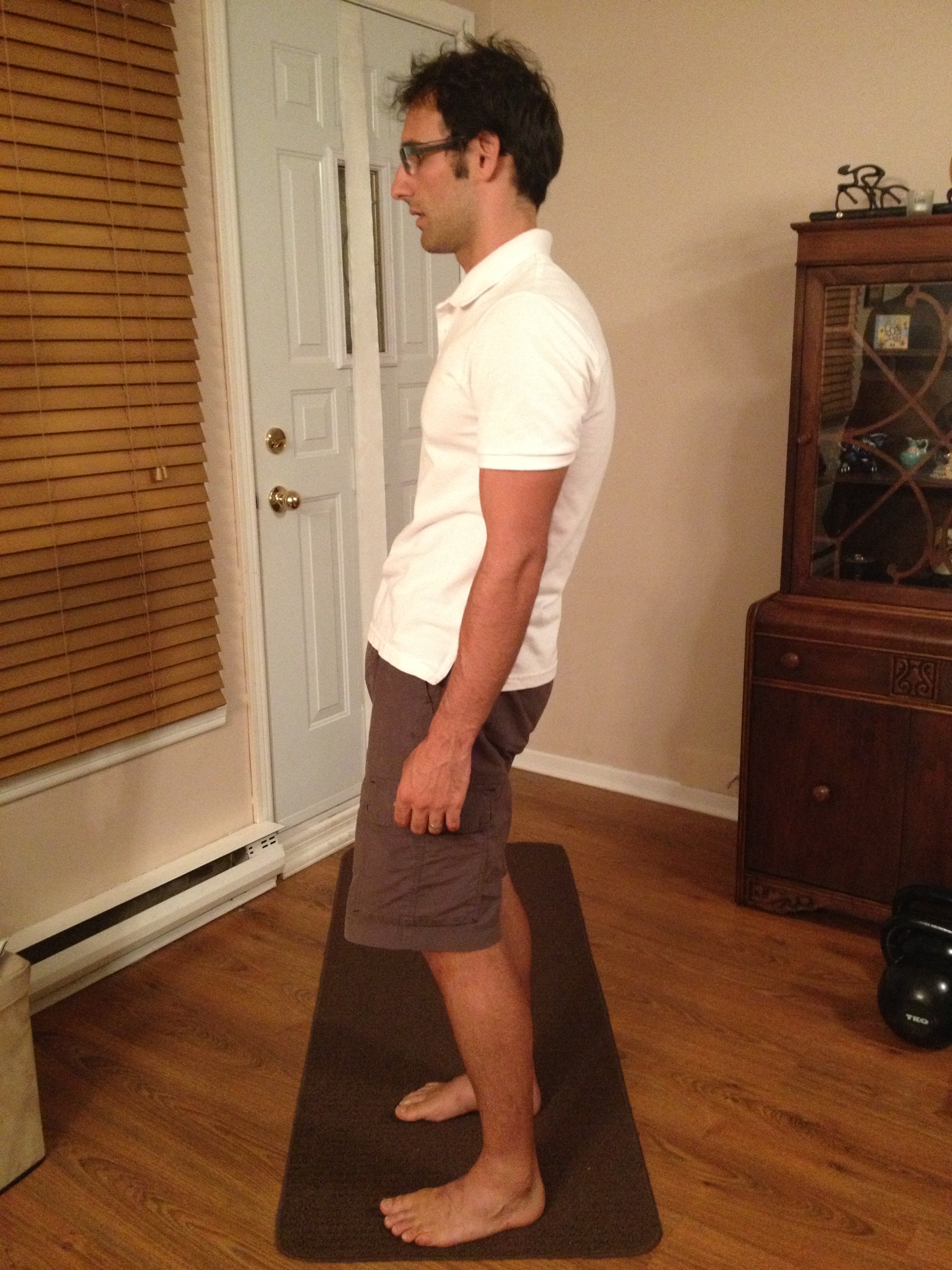I have said it a million times, sitting is one of the biggest causes of back pain today. I actually just released a detailed workout blueprint that is designed for the “desk jockey”. You can check that out here.
What about those who stand all day? Maybe you’re a trainer or a teacher who stands in front of a chalk board 8 hours a day. Experiencing low back pain when standing is actually very common. When comparing it to sitting, stagnant standing can be just as bad. Standing with minimal pain really comes down to how well you know proper mechanics. Proper standing mechanics is something that can easily be learned as long as you’re willing to put in a little effort. That’s exactly what I want to do for you today. I want to give you 4 pointers on how to stand better and what you can do for your current pain.

I remember when I was training full time (10-12+) hour a day my back would be so tight I felt like I was literally walking around like Donald Duck. Just when I thought that was it there were other days where I felt like my abs wouldn’t stop contracting. It felt like I had a constant cramp that wouldn’t let up. Both of these issues stem from a problem not truly understanding the way my body is best positioned. What I mean by this is we all sit and stand differently. Some of us stand with more of a duck butt (anterior pelvic tilt) while other stand with a more posterior pelvic tilt. Either way, while standing is the healthier option over sitting, you are still at risk for adopting improper mechanics that could cause some serious pain.
The best way to start diagnosing your back pain is to asses your stance. You can shoot a video or take pictures of you standing or walking around to get a better idea of what position you tend to favor. Odds are, it’s that exact position that has your back smoked by the end of the day.
Today I wanted to give you some of my best coaching tips for anyone who finds themselves standing for most of the day and battling back pain.
Check it out!
1) It’s not always about exercise: Whoa, but your “Fitness” 4 Back Pain! How can you say that? I know, but listen. What if doing more exercise isn’t what you need? What if you’re already strong enough to manage your pain? The only thing you have going for you is how you use that strength. We rely too much on our joints and bones to hold us up and put ourselves into these jacked up postural positions that would even make Gumby cringe. Try this: Learn to contract your glutes more while you stand (if you have a duck butt) and contract your abs. It will feel like work at first but if it brings relief then you know it’s something you need to start doing more often.
2) Find and use resting positions: Remember, our bodies are designed for movement. Hunting, gathering and building. That’s what our ancestors did. Kids were taught by following their parents around and mimicking them, not in a class room sitting for 8 hours a day. It’s the constant stagnant positions that suck. I am a big advocate for moving around whether that’s sitting in a deep squat while filing paperwork, having one foot on a stool as I stand at my desk, or adopting what’s called a staggered stance while I am standing. The key is to find positions that your back can agree with. The majority of the time our pain is from an imbalance or improper hip alignment which is making a small back issue into a big one. We aren’t wired to think this way, but the more movement you include in your day or standing/sitting posture the better. I have said it before, it almost pays to fidget. Heres to all those years my mom told me to SIT STILL! Example of standing foot position. Both feet are evenly loaded: 3) If the anterior pelvic tilt (most common) is something you can relate to than work on Anti-Flexion core work. My favorite exercise is the Dead Bug. If my back is ever feeling tight from standing I always try to find a chance to hit a set of these. A more advanced variation of the dead bug is the leg drop. Only do these if you have mastered the extended position of the dead bug and you are confident in your core strength. Another great exercise is the stability ball roll outs. I know it’s difficult to find time in your day to do these, especially if you work at an office or in a class room. A good stability ball roll out alternative can be done by using an office chair on wheels. It’s NOT about how low you can go but how much control you have with maintaining a neutral spine. Find some time to work these into your day.
3) If the anterior pelvic tilt (most common) is something you can relate to than work on Anti-Flexion core work. My favorite exercise is the Dead Bug. If my back is ever feeling tight from standing I always try to find a chance to hit a set of these. A more advanced variation of the dead bug is the leg drop. Only do these if you have mastered the extended position of the dead bug and you are confident in your core strength. Another great exercise is the stability ball roll outs. I know it’s difficult to find time in your day to do these, especially if you work at an office or in a class room. A good stability ball roll out alternative can be done by using an office chair on wheels. It’s NOT about how low you can go but how much control you have with maintaining a neutral spine. Find some time to work these into your day.
4) Stop feeding the monster: Be mindful of what you do in the gym. A teacher suffering from lordosis (duck butt) shouldn’t spend any time in the gym putting themselves in that same position. Good example is arching your back while bench pressing, or popping your butt out before each squat or any exercise for that matter. The key is to go into the gym and do the opposite of what your issue is. If you tend to have a posteriorly tilted hip, then relearning proper mechanics and working with a more extended position is going to have a huge impact. Again, it’s all about doing the opposite of what the problem is.
The key thing to remember is that this back pain didn’t happen over night. Back pain is a compounding issue that has been building up for years. Assessing and changing how you do life is key to mastering the art of natural pain management. It’s about fixing the issue at its root rather then cover or just treat the symptoms.
Thanks for reading!
Let me know what you think! If you know someone who has a job where they are stuck standing, send them my way or share this article. They will appreciate the thoughtful gesture!
Join the conversation! Are you more of a butt in or butt out stander? What part of the day do you experience the most pain standing?
Leave your comment below!
TTYS,
William


